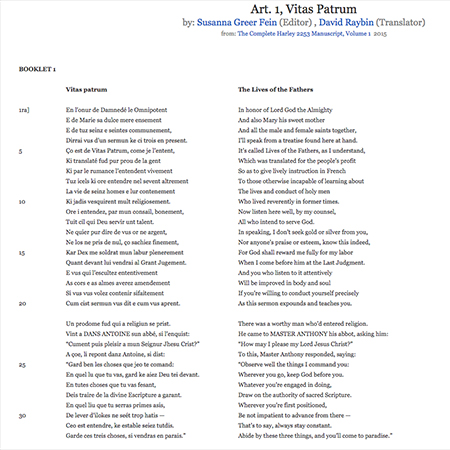A pioneering initiative to make texts from the Middle Ages available to scholars and students "puts the literature out there for everybody."
This story was originally published on September 16, 2020. It has been republished with the news that METS was awarded the 2025 Education Standard of Excellence Award from the American Web Marketing Association. The award recognizes the success of the METS website rebuild both in terms of its coherence and innovation, and its accessibility and versatility for users.
Teachers and students of medieval literature long faced a problem that people studying other literary periods did not: the scant availability of texts.
That's not because there wasn't plenty of literature produced in the Middle Ages or because not much survived. The problem was access.

Publishing medieval texts isn't like offering editions of literary works created after the advent of the printing press. "Everything was copied by hand in the Middle Ages, and so every medieval copy is different. And we almost never have the copy that was written by the author. We just have copies of copies of copies," says Anna Siebach-Larsen, director of the University of Rochester's Rossell Hope Robbins Library and Koller-Collins Center for English Studies.
Each copy introduces difference. The scribes made mistakes or repeated words as they carried out the grueling work of copying. When working in languages they did not know, they sometimes introduced misspellings or substituted one word for another. Words, sentences, and even paragraphs might be omitted from a particular copy.
Scholars of medieval literature have traditionally had to travel to different archives to compare copies-and, if publishing an edition, decide which of the copies is most authoritative and create the notes and context that explain the differences between the various manuscript copies. German scholars took on a lot of this work 200 years ago.






